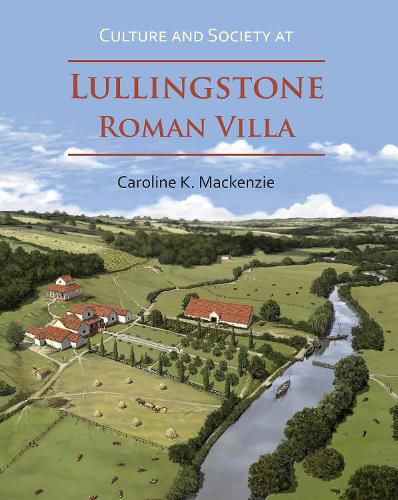Readings Newsletter
Become a Readings Member to make your shopping experience even easier.
Sign in or sign up for free!
You’re not far away from qualifying for FREE standard shipping within Australia
You’ve qualified for FREE standard shipping within Australia
The cart is loading…






Culture and Society at Lullingstone Roman Villa paints a picture of what life might have been like for the inhabitants of the villa in the late third and fourth centuries AD. The villa today, in the Darent Valley, Kent, has an unusual amount of well-preserved evidence for its interior decoration and architecture. Seventy years on from the commencement of the excavation of the site, this study draws on the original reports but also embraces innovative approaches to examining the archaeological evidence and sheds new light on our understanding of the villa’s use. For the first time, the site of Lullingstone Roman Villa is surveyed holistically, developing a plausible argument that the inhabitants used domestic space to assert their status and cultural identity.
An exploration of the landscape setting asks whether property location was as important a factor in the time of Roman Britain as it is today and probes the motives of the villa’s architects and their client. Lullingstone’s celebrated mosaics are also investigated from a fresh perspective. Why were these scenes chosen and what impact did they have on various visitors to the villa? Comparison with some contemporary Romano-British villas allows us to assess whether Lullingstone is what we would expect, or whether it is exceptional. Examples from the wider Roman world are also introduced to enquire how Lullingstone’s residents adopted Roman architecture and potentially the social customs which accompanied it.
$9.00 standard shipping within Australia
FREE standard shipping within Australia for orders over $100.00
Express & International shipping calculated at checkout
Culture and Society at Lullingstone Roman Villa paints a picture of what life might have been like for the inhabitants of the villa in the late third and fourth centuries AD. The villa today, in the Darent Valley, Kent, has an unusual amount of well-preserved evidence for its interior decoration and architecture. Seventy years on from the commencement of the excavation of the site, this study draws on the original reports but also embraces innovative approaches to examining the archaeological evidence and sheds new light on our understanding of the villa’s use. For the first time, the site of Lullingstone Roman Villa is surveyed holistically, developing a plausible argument that the inhabitants used domestic space to assert their status and cultural identity.
An exploration of the landscape setting asks whether property location was as important a factor in the time of Roman Britain as it is today and probes the motives of the villa’s architects and their client. Lullingstone’s celebrated mosaics are also investigated from a fresh perspective. Why were these scenes chosen and what impact did they have on various visitors to the villa? Comparison with some contemporary Romano-British villas allows us to assess whether Lullingstone is what we would expect, or whether it is exceptional. Examples from the wider Roman world are also introduced to enquire how Lullingstone’s residents adopted Roman architecture and potentially the social customs which accompanied it.